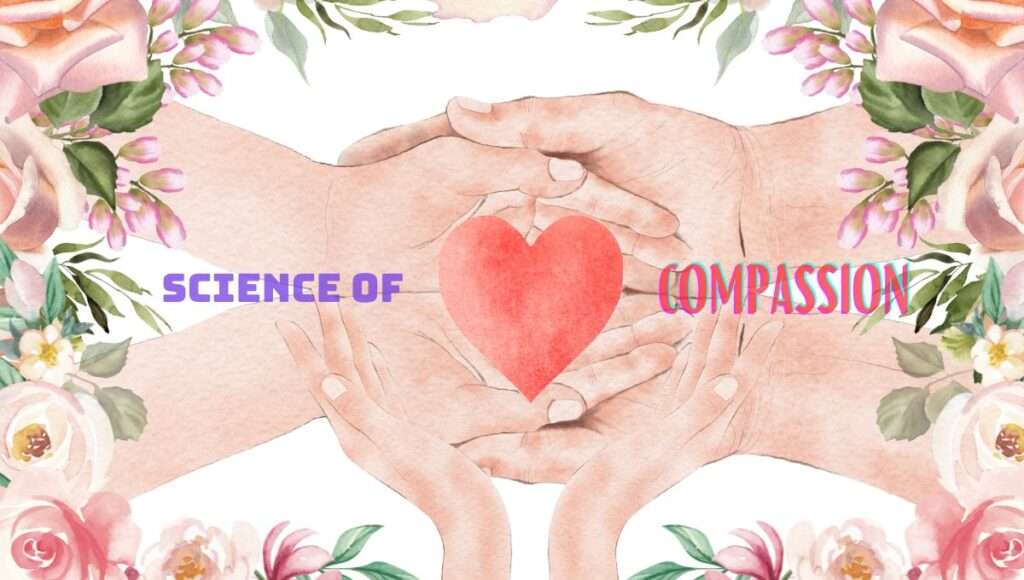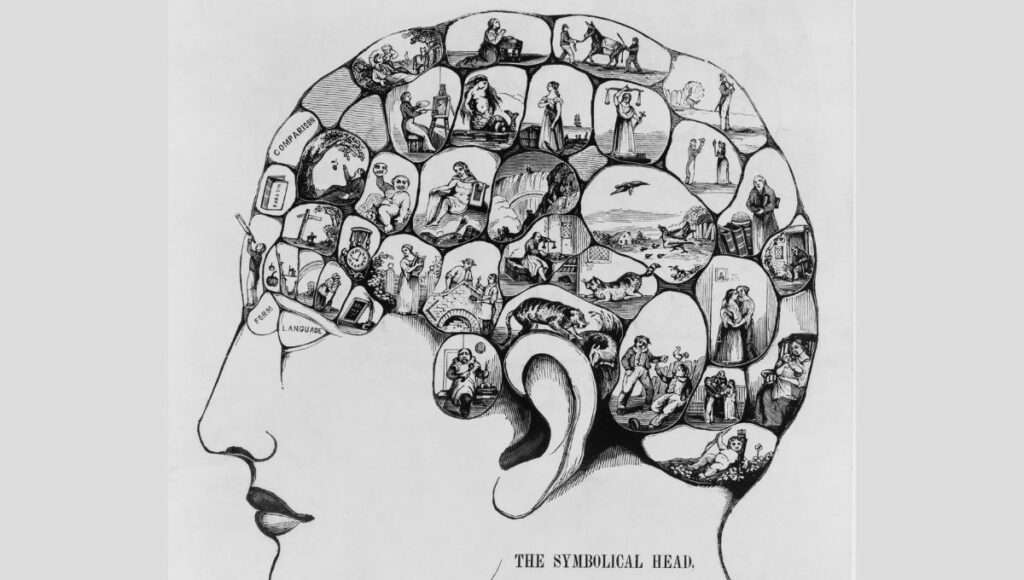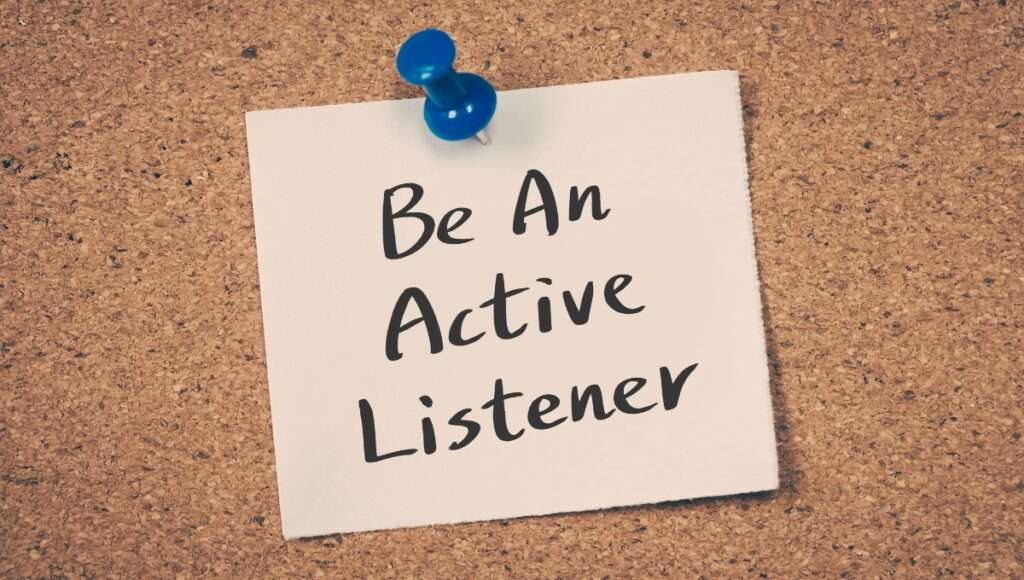The Science of Compassion 101: What Neuroscience and Psychology Can Teach Us About This Essential Human Trait.

Have you ever felt a surge of warmth and kindness when you see someone in need? Have you ever felt a strong urge to help someone who is suffering? Have you ever felt a deep connection with someone who is going through a hard time?
If you answered yes to any of these questions, then congratulations! You have experienced compassion, one of the most powerful and essential human traits that we possess. 😊
Compassion is not just a nice feeling or a moral virtue. It is a skill that can be cultivated and enhanced through practice. It is also a trait that has profound benefits for our health, happiness, relationships, and resilience. 🙌
But what exactly is compassion? How does it differ from empathy and altruism? How is it rooted in our evolutionary history and brain mechanisms? And how can we cultivate it through practice?
In this blog post, I will answer these questions and more, based on the latest scientific research and evidence. I will also share some of my personal experiences and stories of how compassion has changed my life for the better. 😍
By the end of this post, you will have a deeper understanding of the science of compassion, and how you can apply it in your daily life. You will also learn some practical tips and techniques to enhance your compassion skills and make a positive difference in the world. 🌎
Are you ready to dive into the fascinating world of compassion? Let’s get started! 😊
What Is Compassion?
Compassion is defined as “a sensitivity to the suffering of self and others, with a commitment to try to alleviate and prevent it”. It involves three components: cognitive, affective, and motivational.
● The cognitive component refers to the awareness and understanding of the suffering of another person or oneself.
● The affective component refers to the feeling of empathy and concern for the suffering of another person or oneself.
● The motivational component refers to the desire and action to help or relieve the suffering of another person or oneself.
Compassion is not just a passive or reactive response to suffering. It is an active and proactive process that involves both emotion and reason, both heart and mind, both self and others. 🧠💓
Compassion is also not just a one-time event or a temporary state. It is a stable trait that can be measured and developed over time. It is also a skill that can be learned and improved through practice. 📈
Compassion is an essential human trait that benefits both the giver and the receiver. It has been shown to improve our physical, mental, emotional, and social well-being. Some of the benefits of compassion include:
● Reduced stress, anxiety, depression, and pain
● Increased happiness, joy, satisfaction, and gratitude
● Enhanced immune system, cardiovascular health, and longevity
● Improved relationships, trust, cooperation, and empathy
● Greater resilience, coping, and self-compassion
● Higher creativity, productivity, and performance
● More altruism, generosity, kindness, and prosocial behavior
As you can see, compassion is not only good for others but also good for ourselves. It is a win-win situation that creates a positive feedback loop of happiness and well-being. 😊
But how does compassion differ from empathy and altruism? Aren’t they the same thing? Let’s find out in the next section.
What Is Empathy?
Empathy is defined as “the ability to understand and share the feelings of another”. It involves two components: cognitive and affective.
● The cognitive component refers to the ability to take the perspective of another person or oneself.
● The affective component refers to the ability to feel what another person or oneself feels.
Empathy is an important skill that helps us connect with others and ourselves. It enables us to communicate effectively, cooperate efficiently, and resolve conflicts peacefully. It also fosters trust, respect, and mutual understanding among people. 🙋♂️🙋♀️
However, empathy is not always beneficial or adaptive. Sometimes, empathy can be harmful or maladaptive for ourselves or others. Some of the drawbacks of empathy include:
● Empathic distress: This occurs when we feel overwhelmed or exhausted by the suffering of another person or oneself. It can lead to emotional burnout, compassion fatigue, or vicarious trauma.
● Empathic bias: This occurs when we favor or prefer people who are similar to us or who belong to our group over people who are different from us or who belong to another group. It can lead to prejudice, discrimination, or in-group favoritism.
● Empathic inaction: This occurs when we fail or refuse to help another person or oneself who is suffering, even when we have the ability and opportunity to do so. It can be caused by factors such as bystander effect, diffusion of responsibility, or moral disengagement.
As you can see, empathy is not always sufficient or optimal for helping others or ourselves. Sometimes, empathy can be too much or too little, too narrow or too broad, too passive or too active. 😕
That’s why we need compassion, which is more than empathy. Compassion is not just feeling for others or ourselves, but also feeling for others or ourselves. Compassion is not just understanding the suffering of others or ourselves, but also wanting to alleviate and prevent it. Compassion is not just a feeling, but also a motivation and an action. 😊
But how does compassion differ from altruism? Aren’t they the same thing? Let’s find out in the next section.
What Is Altruism?
Altruism is defined as “the principle or practice of unselfish concern for or devotion to the welfare of others”. It involves two components: intention and behavior.
● The intention component refers to the motive or goal of helping another person or oneself.
● The behavior component refers to the act or outcome of helping another person or oneself.
Altruism is an important value that guides our moral and ethical decisions and actions. It enables us to contribute to the common good and the greater good of society and humanity. It also reflects our sense of duty, responsibility, and justice among people. 🙏
However, altruism is not always genuine or pure. Sometimes, altruism can be mixed or tainted with other motives or factors. Some of the drawbacks of altruism include:
● Egoistic altruism: This occurs when we help another person or oneself for our own benefit or reward. It can be motivated by factors such as self-interest, reciprocity, reputation, or guilt.
● Pathological altruism: This occurs when we help another person or oneself at the expense of our own well-being or welfare. It can be caused by factors such as self-sacrifice, self-neglect, self-harm, or self-deception.
● Ineffective altruism: This occurs when we help another person or oneself in a way that is not optimal or beneficial for them or us. It can be influenced by factors such as ignorance, bias, emotion, or intuition.
As you can see, altruism is not always helpful or optimal for others or ourselves. Sometimes, altruism can be selfish or selfless, harmful or harmless, efficient or inefficient. 😟
That’s why we need compassion, which is more than altruism. Compassion is not just helping others or ourselves for any reason or no reason, but for a good reason and a good way. Compassion is not just doing good for others or ourselves, but doing good well for others and ourselves. Compassion is not just a value, but also a skill and a trait. 😊
Now that we have seen how compassion differs from empathy and altruism, let’s see how compassion is rooted in our evolutionary history and brain mechanisms in the next section.
How Is Compassion Rooted in Our Evolutionary History and Brain Mechanisms?

Compassion is not a new phenomenon or a modern invention. It is an ancient and natural phenomenon that has been shaped by our evolutionary history and brain mechanisms over millions of years. 🦖
It has evolved as a survival strategy that helps us cope with the challenges and threats that we face in our environment and society. It also helps us cooperate and collaborate with others who share our genes and interests.
There are three main evolutionary mechanisms that explain the origins of compassion: kin selection, reciprocal altruism, and group selection.
● Kin selection refers to the tendency to help those who are genetically related to us, such as our family members. It increases the chances of passing on our genes to the next generation.
● Reciprocal altruism refers to the tendency to help those who are likely to help us back in the future, such as our friends and allies. It increases the chances of receiving benefits from others when we need them.
● Group selection refers to the tendency to help those who belong to our group, such as our tribe or community. It increases the chances of surviving and thriving in a competitive and hostile world.
These evolutionary mechanisms have shaped our brain structures and functions that support compassion. There are four main brain regions and networks that are involved in compassion: the insula, the anterior cingulate cortex, the medial prefrontal cortex, and the default mode network .
● The insula is a part of the brain that is responsible for interoception, which is the awareness of our internal bodily states and emotions. It helps us feel what others or ourselves feel, such as pain, pleasure, hunger, thirst, or fear.
● The anterior cingulate cortex is a part of the brain that is responsible for attention, conflict resolution, and error detection. It helps us monitor and regulate our emotional responses to others or ourselves, such as distress, anger, guilt, or shame.
● The medial prefrontal cortex is a part of the brain that is responsible for self-referential processing, which is the ability to reflect on our own thoughts, feelings, and actions. It helps us take the perspective of others or ourselves, such as their beliefs, intentions, or goals.
● The default mode network is a network of brain regions that are active when we are not engaged in a specific task, but rather in a state of rest or mind-wandering. It helps us generate spontaneous thoughts and memories that are related to others or ourselves, such as empathy, compassion, or self-compassion.
These brain regions and networks support the cognitive, affective, and motivational aspects of compassion. They enable us to understand, feel, and act on the suffering of others or ourselves. They also enable us to balance our own needs and interests with those of others. 🧘♂️
However, these brain regions and networks are not fixed or static. They are plastic and dynamic, which means they can change and adapt in response to our experiences and practices. This means that we can train and enhance our compassion skills through various methods and techniques that we will explore in the next section.
Compassion is not a gift or a talent that we are born with or without. It is a skill and a trait that we can learn and improve through practice. It is also a habit and a lifestyle that we can adopt and maintain through practice. 🏋️♂️
There are many methods and techniques that can help us enhance our compassion skills and traits. Some of them are based on ancient wisdom and traditions, such as meditation, mindfulness, loving-kindness, gratitude, and prosocial behavior. Some of them are based on modern science and research, such as cognitive-behavioral therapy, positive psychology, neurofeedback, and biofeedback.
How Can We Cultivate Compassion through Practice?
In this section, I will introduce some of the most effective and popular methods and techniques that you can use to cultivate compassion in your daily life. I will also provide some examples and instructions for each method or technique. I will also summarize the benefits and challenges of each method or technique.
How to Practice Compassion Meditation

Compassion meditation is a type of meditation that focuses on cultivating it for oneself and others. It involves four steps: intention, attention, emotion, and action.
● Intention: This is the first step where you set your goal or purpose for practicing compassion meditation. You can say to yourself something like “I want to develop compassion for myself and others” or “I want to reduce suffering for myself and others”.
● Attention: This is the second step where you focus your attention on yourself or another person who is suffering. You can use your breath as an anchor to stay present and mindful. You can also use an image or a phrase to represent yourself or another person.
● Emotion: This is the third step where you generate positive emotions such as love, kindness, care, or warmth for yourself or another person who is suffering. You can use phrases such as “May I be happy” or “May you be free from suffering” to evoke these emotions.
● Action: This is the fourth step where you express your compassion for yourself or another person who is suffering through words or deeds. You can use phrases such as “I will do my best to help myself” or “I will do my best to help you” to convey your compassion.
You can practice this meditation for yourself or another person who is suffering in any order or combination. You can also extend your compassion to other people who are related to you or who belong to different groups from you. You can also practice compassion meditation for all beings who suffer in the world.
Some of the benefits of compassion meditation include:
● Increased compassion for oneself and others
● Reduced negative emotions such as anger, fear, or sadness
● Increased positive emotions such as joy, peace, or happiness
● Improved mental health and well-being
● Enhanced immune system and physical health
Some of the challenges of compassion meditation include:
● Difficulty in focusing attention or generating emotions
● Resistance or aversion to compassion for oneself or others
● Distraction or interference from external or internal factors
● Lack of time or motivation to practice regularly
To overcome these challenges, you can use some of the following tips and suggestions:
● Start small and gradually increase the duration and frequency of your practice
● Find a quiet and comfortable place and time to practice
● Use guided audio or video to follow along
● Join a group or community of like-minded people who practice compassion meditation
● Keep a journal or record of your progress and experiences
How to Practice Mindfulness for Compassion

Mindfulness is defined as “the awareness that arises from paying attention, on purpose, in the present moment, non-judgmentally”. It involves two components: attention and attitude.
● Attention: This is the component where you focus your attention on the present moment, without being distracted by the past or the future. You can use your senses, such as sight, sound, touch, taste, or smell, to anchor your attention to the present moment.
● Attitude: This is the component where you adopt a non-judgmental attitude towards yourself and others, without being attached to or rejecting anything. You can use phrases such as “It is what it is” or “This too shall pass” to cultivate a non-judgmental attitude.
Mindfulness is an important skill that helps us cultivate compassion for ourselves and others. It enables us to be aware of our own thoughts, feelings, and actions, and how they affect ourselves and others. It also enables us to be aware of the thoughts, feelings, and actions of others, and how they affect themselves and us. 🙇♂️
By practicing mindfulness, we can develop four qualities that are essential for compassion: awareness, acceptance, understanding, and kindness.
● Awareness: This is the quality where we become aware of our own suffering and the suffering of others. We can use mindfulness to notice when we are in pain or when others are in pain, without ignoring or avoiding it.
● Acceptance: This is the quality where we accept our own suffering and the suffering of others. We can use mindfulness to acknowledge that suffering is a part of life and that everyone suffers in some way, without denying or resisting it.
● Understanding: This is the quality where we understand the causes and conditions of our own suffering and the suffering of others. We can use mindfulness to investigate what factors contribute to our suffering or the suffering of others, without blaming or judging them.
● Kindness: This is the quality where we show kindness to ourselves and others who are suffering. We can use mindfulness to express our care and concern for ourselves and others who are suffering, without harming or hurting them.
Some of the benefits of mindfulness for compassion include:
● Increased compassion for oneself and others
● Reduced stress, anxiety, depression, and pain
● Increased happiness, joy, satisfaction, and gratitude
● Enhanced immune system, cardiovascular health, and longevity
● Improved relationships, trust, cooperation, and empathy
● Greater resilience, coping, and self-compassion
● Higher creativity, productivity, and performance
● More altruism, generosity, kindness, and prosocial behavior
Some of the challenges of mindfulness for compassion include:
● Difficulty in focusing attention or adopting an attitude
● Resistance or aversion to mindfulness or compassion
● Distraction or interference from external or internal factors
● Lack of time or motivation to practice regularly
To overcome these challenges, you can use some of the following tips and suggestions:
● Start small and gradually increase the duration and frequency of your practice
● Find a quiet and comfortable place and time to practice
● Use guided audio or video to follow along
● Join a group or community of like-minded people who practice mindfulness for compassion
● Keep a journal or record of your progress and experiences
How to Practice Loving-kindness for Compassion

Loving kindness is defined as “the wish that all beings be happy”. It involves four steps: metta (loving-kindness), karuna (compassion), mudita (sympathetic joy), and upekkha (equanimity).
● Metta: This is the first step where you wish yourself and others to be happy. You can say to yourself something like “May I be happy” or “May you be happy”.
● Karuna: This is the second step where you wish yourself and others to be free from suffering. You can say to yourself something like “May I be free from suffering” or “May you be free from suffering”.
● Mudita: This is the third step where you wish yourself and others to rejoice in their happiness. You can say to yourself something like “May I rejoice in my happiness” or “May you rejoice in your happiness”.
● Upekkha: This is the fourth step where you wish yourself and others to have equanimity towards their happiness and suffering. You can say to yourself something like “May I have equanimity towards your happiness and suffering” or “May you have equanimity towards your happiness and suffering”.
You can practice loving-kindness for yourself or others in any order or combination. You can also extend your loving-kindness to other people who are related to you or who belong to different groups from you. You can also practice loving-kindness for all beings who are happy or suffering in the world.
Some of the benefits of loving-kindness for compassion include:
● Increased loving-kindness for oneself and others
● Reduced negative emotions such as anger, fear, or sadness
● Increased positive emotions such as joy, peace, or happiness
● Improved mental health and well-being
● Enhanced immune system and physical health
● Improved relationships, trust, cooperation, and empathy
● Greater resilience, coping, and self-compassion
● Higher creativity, productivity, and performance
● More altruism, generosity, kindness, and prosocial behavior
Some of the challenges of loving-kindness for compassion include:
● Difficulty in generating positive emotions or wishes
● Resistance or aversion to loving-kindness for oneself or others
● Distraction or interference from external or internal factors
● Lack of time or motivation to practice regularly
To overcome these challenges, you can use some of the following tips and suggestions:
● Start small and gradually increase the duration and frequency of your practice
● Find a quiet and comfortable place and time to practice
● Use guided audio or video to follow along
● Join a group or community of like-minded people who practice loving-kindness for compassion
● Keep a journal or record of your progress and experiences
How to Practice Gratitude for Compassion

Gratitude is defined as “the quality of being thankful; readiness to show appreciation for and to return kindness”. It involves two components: recognition and expression.
● Recognition: This is the component where you recognize the good things that happen to you or others, such as gifts, favors, compliments, or opportunities.
● Expression: This is the component where you express your appreciation for the good things that happen to you or others, such as saying thank you, writing a note, giving a hug, or doing a favor.
Gratitude is an important skill that helps us cultivate compassion for ourselves and others. It enables us to appreciate what we have and what we receive, rather than taking them for granted or complaining about them. It also enables us to appreciate what others have and what they give, rather than envying them or ignoring them. 🙏
By practicing gratitude, we can develop four qualities that are essential for compassion: satisfaction, generosity, empathy, and kindness.
● Satisfaction: This is the quality where we feel satisfied with what we have and what we receive, rather than feeling dissatisfied with what we lack or what we want. We can use gratitude to focus on the positive aspects of our lives and our experiences, rather than on the negative ones.
● Generosity: This is the quality where we feel generous with what we have and what we give, rather than feeling stingy with what we hoard or what we withhold. We can use gratitude to share our resources and our gifts with others who need them or appreciate them, rather than keeping them for ourselves.
● Empathy: This is the quality where we feel empathy for others who have less than us or who suffer more than us, rather than feeling pity for them or indifference towards them. We can use gratitude to acknowledge the challenges and hardships that others face in their lives, rather than ignoring them or minimizing them.
● Kindness: This is the quality where we show kindness to ourselves and others who deserve it or need it, rather than showing cruelty to them or neglecting them. We can use gratitude to express our care and concern for ourselves and others who are happy or suffering, rather than harming them or hurting them.
Some of the benefits of gratitude for compassion include:
● Increased gratitude for oneself and others
● Reduced negative emotions such as anger, fear, or sadness
● Increased positive emotions such as joy, peace, or happiness
● Improved mental health and well-being
● Enhanced immune system and physical health
● Improved relationships, trust, cooperation, and empathy
● Greater resilience, coping, and self-compassion
● Higher creativity, productivity, and performance
● More altruism, generosity, kindness, and prosocial behavior
Some of the challenges of gratitude for compassion include:
● Difficulty in recognizing or expressing gratitude
● Resistance or aversion to gratitude for oneself or others
● Distraction or interference from external or internal factors
● Lack of time or motivation to practice regularly
To overcome these challenges, you can use some of the following tips and suggestions:
● Start small and gradually increase the number and frequency of your gratitude practices
● Find a quiet and comfortable place and time to practice
● Use a gratitude journal, app, or website to record your gratitude
● Join a group or community of like-minded people who practice gratitude for compassion
● Keep a journal or record of your progress and experiences
How to Practice Prosocial Behavior for Compassion

Prosocial behavior is defined as “voluntary behavior intended to benefit another”. It involves two components: intention and behavior.
● Intention: This is the component where you intend to help another person or oneself, such as offering help, giving advice, or providing support.
● Behavior: This is the component where you actually help another person or oneself, such as doing a favor, donating money, or volunteering time.
Prosocial behavior is an important skill that helps us cultivate compassion for ourselves and others. It enables us to act on our compassion and make a positive difference in the world. It also enables us to receive compassion and make a positive difference in ourselves. 🌟
By practicing prosocial behavior, we can develop four qualities that are essential for compassion: action, impact, feedback, and learning.
● Action: This is the quality where we take action to help ourselves and others who are suffering, rather than being passive or inactive. We can use prosocial behavior to translate our compassion into concrete deeds that can alleviate or prevent suffering.
● Impact: This is the quality where we see the impact of our actions on ourselves and others who are suffering, rather than being blind or oblivious. We can use prosocial behavior to measure the outcomes and effects of our actions on the well-being and happiness of ourselves and others.
● Feedback: This is the quality where we get feedback from ourselves and others who are suffering, rather than being isolated or disconnected. We can use prosocial behavior to receive appreciation and recognition from ourselves and others who benefit from our actions.
● Learning: This is the quality where we learn from our actions and feedback, rather than being stagnant or rigid. We can use prosocial behavior to improve our skills and knowledge which can enhance our compassion and effectiveness.
Some of the benefits of prosocial behavior for compassion include:
● Increased prosocial behavior for oneself and others
● Reduced negative emotions such as anger, fear, or sadness
● Increased positive emotions such as joy, peace, or happiness
● Improved mental health and well-being
● Enhanced immune system and physical health
● Improved relationships, trust, cooperation, and empathy
● Greater resilience, coping, and self-compassion
● Higher creativity, productivity, and performance
● More altruism, generosity, kindness, and prosocial behavior
Some of the challenges of prosocial behavior for compassion include:
● Difficulty in finding or creating opportunities to help
● Resistance or aversion to helping oneself or others
● Distraction or interference from external or internal factors
● Lack of time or motivation to help regularly
To overcome these challenges, you can use some of the following tips and suggestions:
● Start small and gradually increase the amount and frequency of your help
● Find a cause or a person that you care about and want to help
● Use a prosocial behavior app, website, or platform to find or offer help
● Join a group or community of like-minded people who practice prosocial behavior for compassion
● Keep a journal or record of your progress and experiences
Conclusion

In this blog post, I have explained what compassion is, how it differs from empathy and altruism, how it is rooted in our evolutionary history and brain mechanisms, and how we can cultivate it through practice.
I have also shared some of my personal experiences and stories of how compassion has changed my life for the better.
Compassion is not only good for others but also good for ourselves. It is a win-win situation that creates a positive feedback loop of happiness and well-being.
It is not only a feeling but also a motivation and an action. It is not only a value but also a skill and a trait.
It is not only an ancient phenomenon but also a modern one. It is not only relevant for the past, but also for the present and the future.
It is not only an individual phenomenon but also a collective one. It is not only important for ourselves, but also for our families, friends, communities, societies, and humanity.
It is not only possible but also necessary. It is not only desirable but also essential.
It is not only a choice but also a responsibility. It is not only an option, but also an obligation.
It is not only a gift but also a challenge. It is not only easy but also hard.
But it is worth it. 😊
Here are some actionable tips or suggestions for applying compassion in your daily life:
● Practice compassion meditation for yourself or others who are suffering
● Practice mindfulness for compassion for yourself or others who are happy or suffering
● Practice loving-kindness for compassion for yourself or others who are happy or suffering
● Practice gratitude for compassion for yourself or others who are happy or suffering
● Practice prosocial behavior for compassion for yourself or others who are happy or suffering
● Read books, articles, blogs, or podcasts on compassion and related topics
● Watch movies, documentaries, videos, or TED talks on compassion and related topics
● Listen to music, songs, or playlists on compassion and related topics
● Join online or offline courses, workshops, or programs on compassion and related topics
● Join online or offline groups, communities, or movements on compassion and related topics
● Seek professional help or support if you struggle with compassion for yourself or others
I hope this blog post has helped you learn more about the science of compassion and how to cultivate it in your daily life. I also hope it has inspired you to practice compassion for yourself and others more often and more effectively. 😊
If you have any questions, comments, or feedback, please feel free to leave them below. I would love to hear from you and learn from you. 😊
Thank you for reading this blog post. I appreciate your time and attention. 🙏

May you be happy. May you be free from suffering. May you rejoice in your happiness. May you have equanimity towards your happiness and suffering. 🙏
What is the difference between compassion and sympathy?
Sympathy is defined as “the feeling of pity and sorrow for someone else’s misfortune”. It involves one component: emotion.
● Emotion: This is the component where you feel sorry or sad for another person who is suffering.
Sympathy is different from compassion in several ways:
● Sympathy is a passive and reactive response to suffering, while compassion is an active and proactive process that involves both emotion and reason.
● Sympathy is a one-dimensional feeling that focuses on the negative aspect of suffering, while compassion is a multi-dimensional skill that balances the positive and negative aspects of suffering.
● Sympathy can create a sense of separation or distance between oneself and another person who is suffering, while compassion can create a sense of connection or closeness between oneself and another person who is suffering.
What is the difference between compassion and self-compassion?
Self-compassion is defined as “the extension of kindness, care, warmth, and understanding (rather than harsh judgment) toward oneself when faced with shortcomings, failures, or suffering”. It involves three components: self-kindness, common humanity, and mindfulness.
● Self-kindness: This is the component where you treat yourself with kindness, care, warmth, and understanding when you suffer or fail, rather than with harsh judgment, criticism, or blame.
● Common humanity: This is the component where you recognize that suffering and failure are part of the human condition that everyone experiences, rather than feeling isolated or abnormal.
● Mindfulness: This is the component where you hold your suffering or failure in balanced awareness, rather than ignoring or exaggerating it.
Self-compassion is different from compassion in several ways:
● It is directed towards oneself, while compassion is directed towards others or oneself.
● It is more challenging than compassion for many people because they tend to be more critical or judgmental of themselves than of others.
● It is more beneficial than compassion for many people because it can enhance their self-esteem, self-confidence, self-worth, and self-love.
What are some of the myths or misconceptions about compassion?
There are many myths or misconceptions about compassion that can prevent people from practicing it or benefiting from it. Some of them are:
● It is a sign of weakness or vulnerability. This is not true. It is a sign of strength and courage. It takes courage to face suffering and help others who are suffering. It also takes strength to balance one’s own needs and interests with those of others.
● It is a luxury or a privilege that only some people can afford. This is not true. It is a necessity and a right that everyone can afford. It does not require money, time, or resources to practice compassion. It only requires intention, attention, emotion, and action.
● It is a burden or a sacrifice that only some people can bear. This is not true. It is a benefit and a reward that everyone can enjoy. It does not deplete one’s energy, happiness, or well-being to practice compassion. It enhances one’s energy, happiness, and well-being.
● It is incompatible or irrelevant with other values or goals that we have. This is not true. It is compatible and relevant with any value or goal that we have, such as success, achievement, excellence, or justice. Compassion can help us achieve our values and goals in a more effective and sustainable way.
How can I measure or evaluate my compassion level?
There are several ways to measure or evaluate your compassion level, such as using self-report questionnaires, behavioral tasks, physiological measures, or neuroimaging techniques.
Some of the most widely used and validated self-report questionnaires that measure compassion level are:
● The Self-Compassion Scale (SCS), which measures how compassionate you are towards yourself
● The Compassionate Love Scale (CLS), which measures how compassionate you are towards others
● The Compassion Scale (CS), which measures how compassionate you are towards both yourself and others
Some of the most widely used and validated behavioral tasks that measure compassion level are:
● The Dictator Game (DG), which measures how generous you are with your money towards a stranger
● The Ultimatum Game (UG), which measures how fair you are with your money towards a stranger
● The Helping Game (HG), which measures how willing you are to help a stranger in need
Some of the most widely used and validated physiological measures that measure compassion level are:
● Heart rate variability (HRV), which measures how flexible your heart rate is in response to stress or emotion
● Skin conductance response (SCR), which measures how sweaty your skin is in response to stress or emotion
● Facial electromyography (EMG), which measures how expressive your facial muscles are in response to stress or emotion
Some of the most widely used and validated neuroimaging techniques that measure compassion level are:
● Functional magnetic resonance imaging (fMRI), which measures how active your brain regions are in response to compassion stimuli or tasks
● Electroencephalography (EEG), which measures how synchronized your brain waves are in response to compassion stimuli or tasks
● Magnetoencephalography (MEG), which measures how magnetic your brain fields are in response to compassion stimuli or tasks
You can use any of these methods or a combination of them to measure or evaluate your compassion level. You can also compare your results with normative data or with your own baseline data to see how you rank or improve over time.
How can I increase or maintain my compassion level?
There are several ways to increase or maintain your compassion level, such as using the methods and techniques that I have introduced in this blog post, such as compassion meditation, mindfulness for compassion, loving-kindness for compassion, gratitude for compassion, and prosocial behavior for compassion.
You can also use some of the following tips and suggestions to increase or maintain your compassion level:
● Practice regularly and consistently. The more you practice, the more you benefit.
● Practice with variety and diversity. The more you practice with different people, situations, and contexts, the more you generalize.
● Practice with curiosity and openness. The more you practice with a learning mindset, the more you grow.
● Practice with patience and perseverance. The more you practice with a positive attitude, the more you succeed.
● Practice with support and guidance. The more you practice with a mentor, coach, or teacher, the more you excel.



